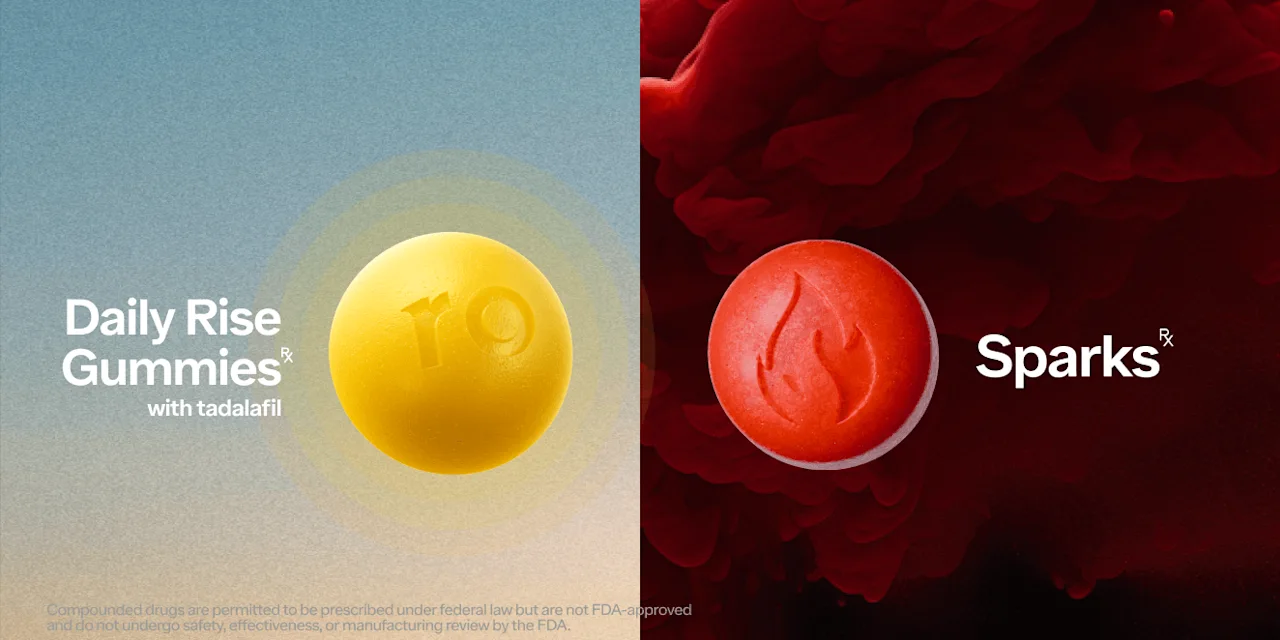Key takeaways
Transcutaneous electrical nerve stimulation (TENS) is a non-invasive supplemental treatment that uses a low-voltage electric current to relieve pain.
Small studies indicate TENS therapy could be beneficial for erectile dysfunction, but more research is needed.
There currently is no consensus on male TENS unit pad placement for ED. In studies, TENS pads have been placed on the perineum.
Here's what we'll cover
Key takeaways
Transcutaneous electrical nerve stimulation (TENS) is a non-invasive supplemental treatment that uses a low-voltage electric current to relieve pain.
Small studies indicate TENS therapy could be beneficial for erectile dysfunction, but more research is needed.
There currently is no consensus on male TENS unit pad placement for ED. In studies, TENS pads have been placed on the perineum.
From consuming animal genitalia in the Middle Ages to FDA-approved medications such as Viagra, the evolution of erectile dysfunction (ED) treatments has come a long way. So much so, in fact, that electrical stimulation via a TENS unit has entered the conversation. But does a TENS machine actually work for ED? And if so, what’s a recommended male TENS unit pad placement for ED?
While research is limited, some small studies do suggest that using a TENS unit may enhance erectile function. Plus, the device is considered fairly safe, accessible, and easy to use. But that’s just the start. Here’s what you need to know about safety, risks, potential benefits, and male TENS unit pad placement for ED.
What is a TENS unit?
Transcutaneous electrical nerve stimulation (TENS) is a non-invasive therapy traditionally used for pain relief. A TENS unit is a small, battery-powered device that attaches to the body via wearable electrodes, which are sticky pads that adhere to the skin.
Where you place the electrodes depends on what you’re treating. Similar to acupuncture, the pads are placed near or around the spots causing pain or discomfort.
The device works by delivering low-voltage electric impulses—between 10 and 50 hertz, depending on your needs—through the surface of the skin to activate nerves involved in pain perception. The idea is that activating these nerves will block or change the way pain is perceived.
It might sound a little sci-fi, but utilizing electricity for pain relief has been around for centuries. Long ago, electric eels were used for this purpose. Luckily, less slippery forms of electrotherapy, such as TENS units, exist nowadays.
One big benefit of TENS is you can easily do it on your own; the device is portable and small enough to fit in a pocket. You can visit a healthcare provider or physiotherapist who can conduct the treatment, or they can prescribe a TENS unit for you to use at home.
TENS may be covered by insurance if it’s deemed medically necessary. For example, Medicare covers TENS therapy for certain instances of chronic pain and acute pain following surgery. The cost of a TENS unit without insurance varies but usually ranges from $24 to over $100.
Though TENS units are available online or over-the-counter at pharmacies, it’s always a good idea to speak with a healthcare professional first to ensure it’s safe and you know how to use it properly.
TENS therapy is most commonly used for:
Postoperative pain
Lower back pain
Period pain
Migraines
Fibromyalgia
Osteoarthritis
Nerve pain resulting from an injury (for example, spinal cord injury)
While there is research indicating TENS can help reduce pain intensity without serious side effects, it’s recommended as an adjunct or supplemental therapy, not a primary treatment for any condition, including ED. That’s because there really isn’t a scientific consensus on TENS therapy (for pain relief or erectile dysfunction)—at least not yet.
Is TENS for ED effective?
Before jumping into whether TENS for ED is effective and safe as well as optimal male TENS unit pad placement for ED, it’s important to note that the research on this treatment is limited.
That being said, in addition to pain relief, studies have found TENS might increase blood flow; though researchers aren’t exactly sure how yet. ED is often a result of impacted blood flow to the penis. And since TENS has been found to improve circulation, in theory, it could potentially encourage better blood flow to the penis, thereby helping alleviate ED. (The keywords here being “in theory.”)
One 2022 study including 25 people found TENS to be effective in 68% of participants, improving erectile function, penile hardness, and ED-related anxiety. A small 2020 study of 30 people comparing electrical stimulation and aerobic exercise found both techniques to be beneficial for ED. But contrary to what researchers expected, electrotherapy appeared to yield more positive results than treadmill exercise for ED.
Another 2024 study with 10 participants found TENS therapy may potentially boost satisfaction for people living with ED. However, the results may be skewed as all of the participants were already taking ED medication at the same time.
Though these small studies show some promise, they’re nowhere near enough for TENS to be recommended as a viable treatment option until more comprehensive research is done.
Is TENS for ED safe?
Though there’s not much evidence to support TENS as an effective treatment for ED, the good news is, trying it likely won’t cause any harm as long as the device is functioning properly and you follow instructions provided.
So far, the main side effects reported from using a TENS unit for those without other medical conditions are skin irritation or rashes from the adhesive pads. For people with sensitive skin or skin allergies, hypoallergenic pads are available.
If used correctly, TENS therapy should not hurt. While some folks might find the electrical stimulation or pulses to be uncomfortable, many feel a tingling sensation passing through their skin. Placing the pads too close to each other can also result in unpleasant electrical sensations. TENS devices have different settings, so you can adjust the intensity and frequency as needed.
That said, TENS therapy isn’t for everyone. If you have epilepsy, wear a pacemaker, or are pregnant, TENS should be avoided. Even if you don’t have a health condition or implanted device, it’s always a good idea to speak to a healthcare provider before trying this (or any) new treatment.
How to use a TENS unit for erectile dysfunction
Even though evidence is lacking on TENS for ED, say you want to try it anyway. How exactly do you use it…down there? Is there a recommended male TENS unit pad placement for ED?
Unfortunately, there is no one standard TENS unit pad placement recommended for ED. In the aforementioned 2024 study, electrodes were placed at the base of the penis and the perineum (the area between the scrotum and anus). And while some research from 2020 and 2024 involved putting the pads directly on the shaft, it’s best to consult an expert before sticking any electricity-delivering device directly on your penis.
Operating the unit itself is pretty straightforward, but it’s imperative you read the instructions provided—and/or have a healthcare provider walk you through using it—before taking matters into your own hands, as devices can vary slightly. Make sure the device is switched off before you attach the pads to clean, dry skin, which is key for optimal adherence and, in turn, electrical stimulation, according to certain manufacturers. Place the pads at least 1 inch apart in the desired region, turn the device on, and set the strength of the electrical impulses as directed by your provider and/or the manufacturer. There is no guidance on how long TENS therapy for ED should last; in studies, sessions ranged from 20-30 minutes.
Alternatives to TENS for ED
Oftentimes, the first-line treatment for ED is oral medications called PDE5 inhibitors. These work in part by increasing blood flow to the penis, which results in stronger, longer-lasting erections.
Common PDE5 inhibitors include:
Viagra (sildenafil)
Stendra (avanafil)
Staxyn and Levitra (vardenafil)
More new treatment options continue to emerge, too. For example, there’s Ro Sparks, a sublingual tablet containing sildenafil and tadalafil (the active ingredients in Viagra and Cialis respectively) that starts working within 15 minutes, as well as Ro Daily Rise Gummies, a fruit-flavored gummy containing 7 mg of tadalafil that can be taken daily.
Depending on the root cause(s) of your ED, lifestyle and diet changes may be enough to improve your erections overtime. In addition to being good for your overall wellbeing, regular exercise has been shown to benefit cardiovascular health. And guess what? Heart health and erections are associated, with studies showing that consistently working out can reduce your risk for heart disease as well as for ED.
Similarly, following a healthy diet can manage risk factors for cardiovascular troubles, which may help alleviate or even stave off erection problems. In fact, several studies have linked a healthy diet to reduced risk for ED.
Other ways to treat ED without medication? Getting better sleep, managing stress and overall mental health, and trying pelvic floor exercises, just to name a few.
DISCLAIMER
If you have any medical questions or concerns, please talk to your healthcare provider. The articles on Health Guide are underpinned by peer-reviewed research and information drawn from medical societies and governmental agencies. However, they are not a substitute for professional medical advice, diagnosis, or treatment.
Viagra Important Safety Information: Read more about serious warnings and safety info.
Cialis Important Safety Information: Read more about serious warnings and safety info.
Almalty, A. R., Hamed, S. H., Jebril, M. Y., et al. (2024). The effect of electrical stimulation on skin vulnerability to irritants. Skin Research and Technology, 30(2). doi:10.1111/srt.13591. Retrieved from https://www.ncbi.nlm.nih.gov/pmc/articles/PMC10818122/
Centers for Medicare & Medicaid Services. (2023). Transcutaneous Electrical Nerve Stimulators (TENS) - Policy Article. Retrieved from https://www.cms.gov/medicare-coverage-database/view/article.aspx?articleId=52520
Feldman, H. A., Goldstein, I., Hatzichristou, D. G., et al. (1994). Impotence and Its Medical and Psychosocial Correlates: Results of the Massachusetts Male Aging Study. Journal of Urology, 151(1), 54–61. doi: 10.1016/s0022-5347(17)34871-1. Retrieved from https://pubmed.ncbi.nlm.nih.gov/8254833/
Gurtner, K., Saltzman, A., Hebert, K., & Laborde, E. (2017). Erectile Dysfunction: A Review of Historical Treatments With a Focus on the Development of the Inflatable Penile Prosthesis. American Journal of Men's Health, 11(3), 479–486. https://doi.org/10.1177/1557988315596566. Retrieved from https://www.ncbi.nlm.nih.gov/pmc/articles/PMC5675239/
Johnson, M. (2007). Transcutaneous Electrical Nerve Stimulation: Mechanisms, Clinical Application and Evidence. Reviews In Pain, 1(1). doi:10.1177/204946370700100103. Retrieved from https://www.ncbi.nlm.nih.gov/pmc/articles/PMC4589923/
Johnson, M. I., Paley, C. A., Jones, G., et al. (2022). Efficacy and safety of transcutaneous electrical nerve stimulation (TENS) for acute and chronic pain in adults: a systematic review and meta-analysis of 381 studies (the meta-TENS study). BMJ Open, 12, e051073. doi:10.1136/bmjopen-2021-051073. Retrieved from https://bmjopen.bmj.com/content/12/2/e051073
Kamali, F., Mirkhani, H., Nematollahi, A., et al. (2017). The Effect of Transcutaneous Electrical Nerve Stimulation of Sympathetic Ganglions and Acupuncture Points on Distal Blood Flow. Journal of Acupuncture and Meridian Studies, 10(2). doi:10.1016/j.jams.2017.01.003. Retrieved from https://www.sciencedirect.com/science/article/pii/S2005290116300899
Moussa, M., Chakra, M. A., Dabboucy, B., et al. (2022). Transcutaneous dorsal penile nerve stimulation for the treatment of premature ejaculation: A novel technique. Asian Journal of Urology, 9(3). doi:10.1016/j.ajur.2022.02.004. Retrieved from https://www.ncbi.nlm.nih.gov/pmc/articles/PMC9399540/
Rislanu, A., Auwal, H., Musa, D., et al. (2020). Comparative Effectiveness of Electrical Stimulation and Aerobic Exercise in the Management of Erectile Dysfunction: A Randomized Clinical Trial. Ethiopian Journal of Health Sciences, 30(6). doi:10.4314/ejhs.v30i6.14. Retrieved from https://www.ncbi.nlm.nih.gov/pmc/articles/PMC8047238/
Saffati, G., Naeem, T., Orozco-Rendon, D., et al. (2024). Transcutaneous Electrical Neural Stimulation Improves Overall Satisfaction in Patients with Erectile Dysfunction. The Journal of Sexual Medicine, 21(1). doi:10.1093/jsxmed/qdae001.146. Retrieved from https://academic.oup.com/jsm/article/21/Supplement_1/qdae001.146/7600661
Teoli, D., Dua, A., & An, J. (2024). Transcutaneous Electrical Nerve Stimulation. StatPearls. Retrieved from https://www.ncbi.nlm.nih.gov/books/NBK537188/
TENSUnits. (2023). TENS Unit Placement 101: Insights into Effective Electrode Positioning. Retrieved from https://tensunits.com/blogs/blog/tens-unit-placement-101
Tsujimura, A. (2017). Atherosclerosis is associated with erectile function and lower urinary tract symptoms, especially nocturia, in middle-aged men. Prostate International, 5(2), 65–69. doi: 10.1016/j.prnil.2017.01.006. Retrieved from https://www.ncbi.nlm.nih.gov/pmc/articles/PMC5448724/
Vance, C., Dailey, D. L., Chimenti, R. L., et al. (2022). Using TENS for Pain Control: Update on the State of the Evidence. Medicina, 58(10). doi:10.3390/medicina58101332. Retrieved from https://www.ncbi.nlm.nih.gov/pmc/articles/PMC9611192/
Zhang, S., Zhang, S. M., Liu, K. F., et al. (2022). [Transcutaneous neuromuscular electrical stimulation for the treatment of erectile dysfunction: A clinical observation]. Zhonghua Nan Ke Xue (National Journal of Andrology), 28(8), 691-695. Retrieved from https://pubmed.ncbi.nlm.nih.gov/37838967/













